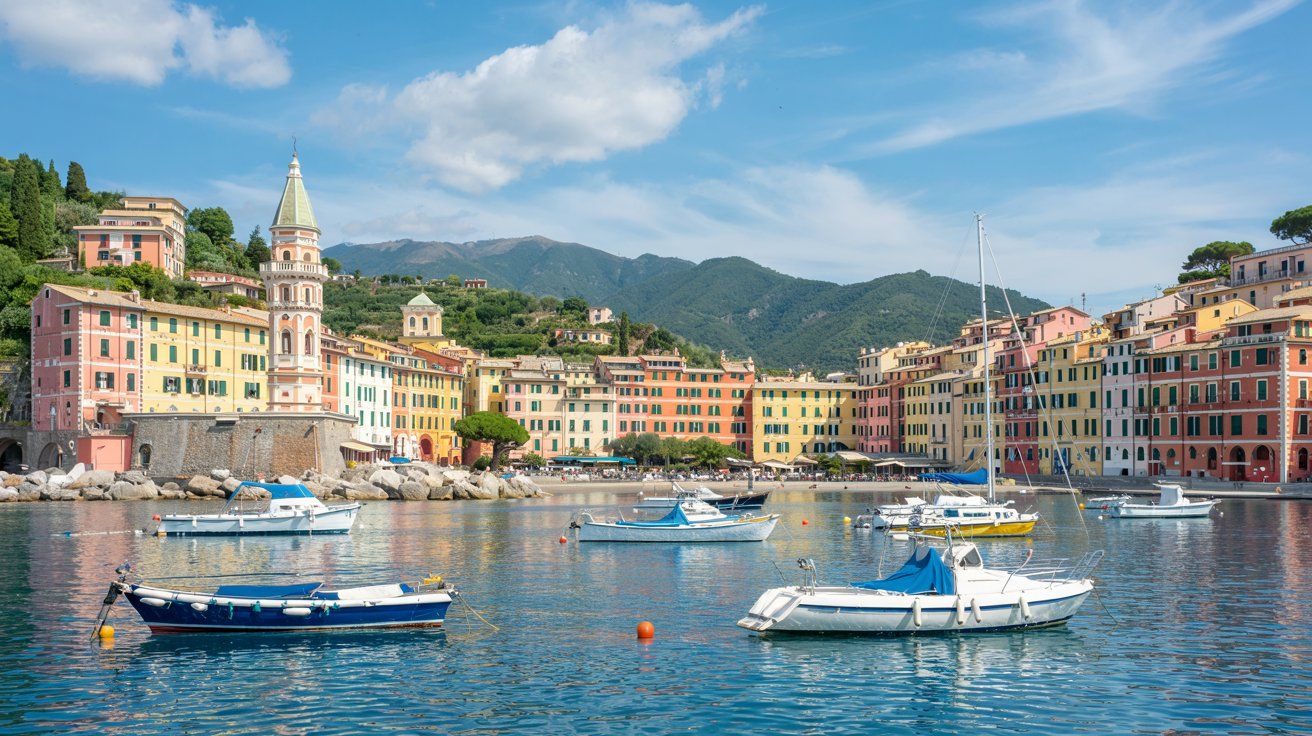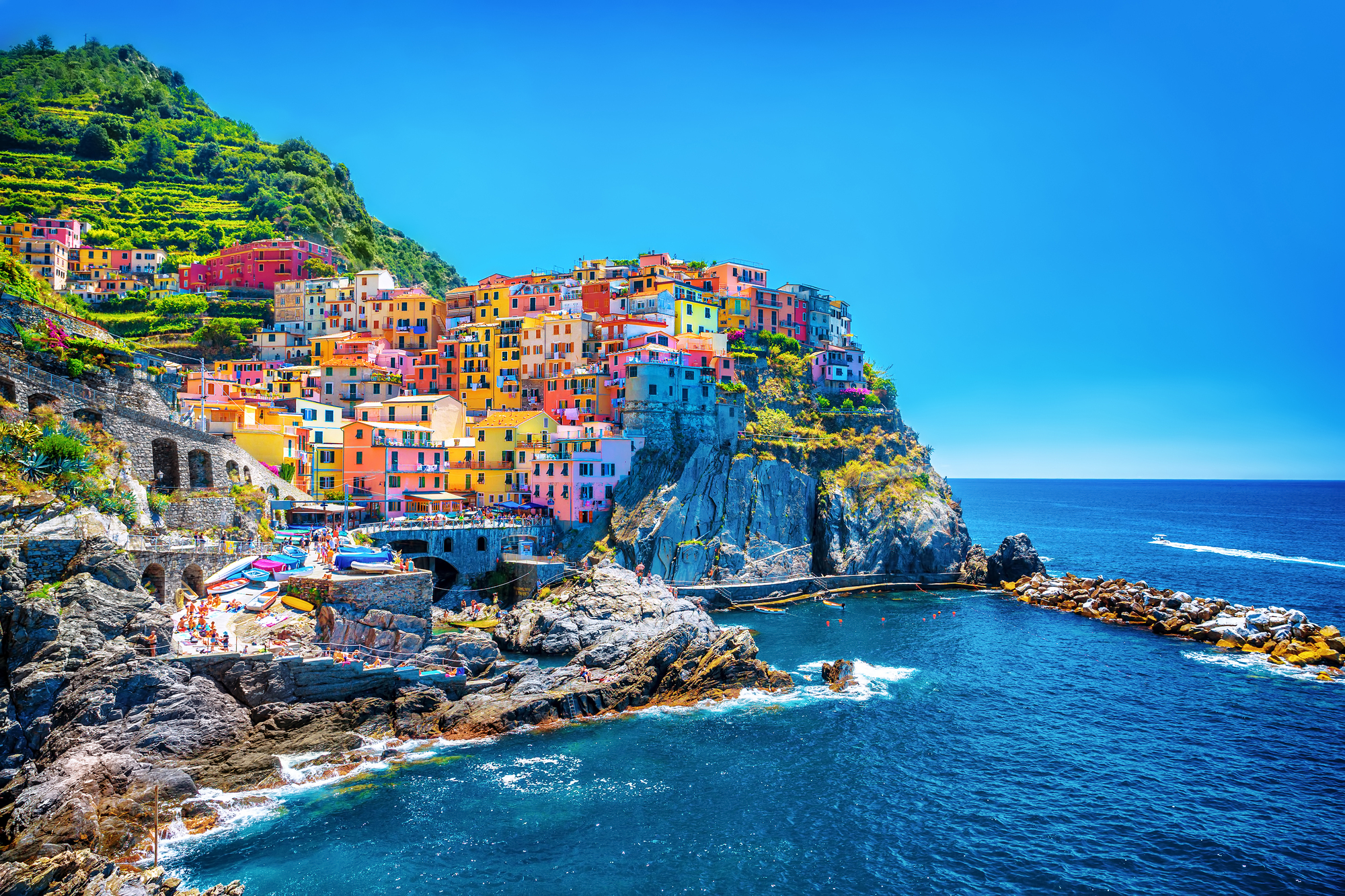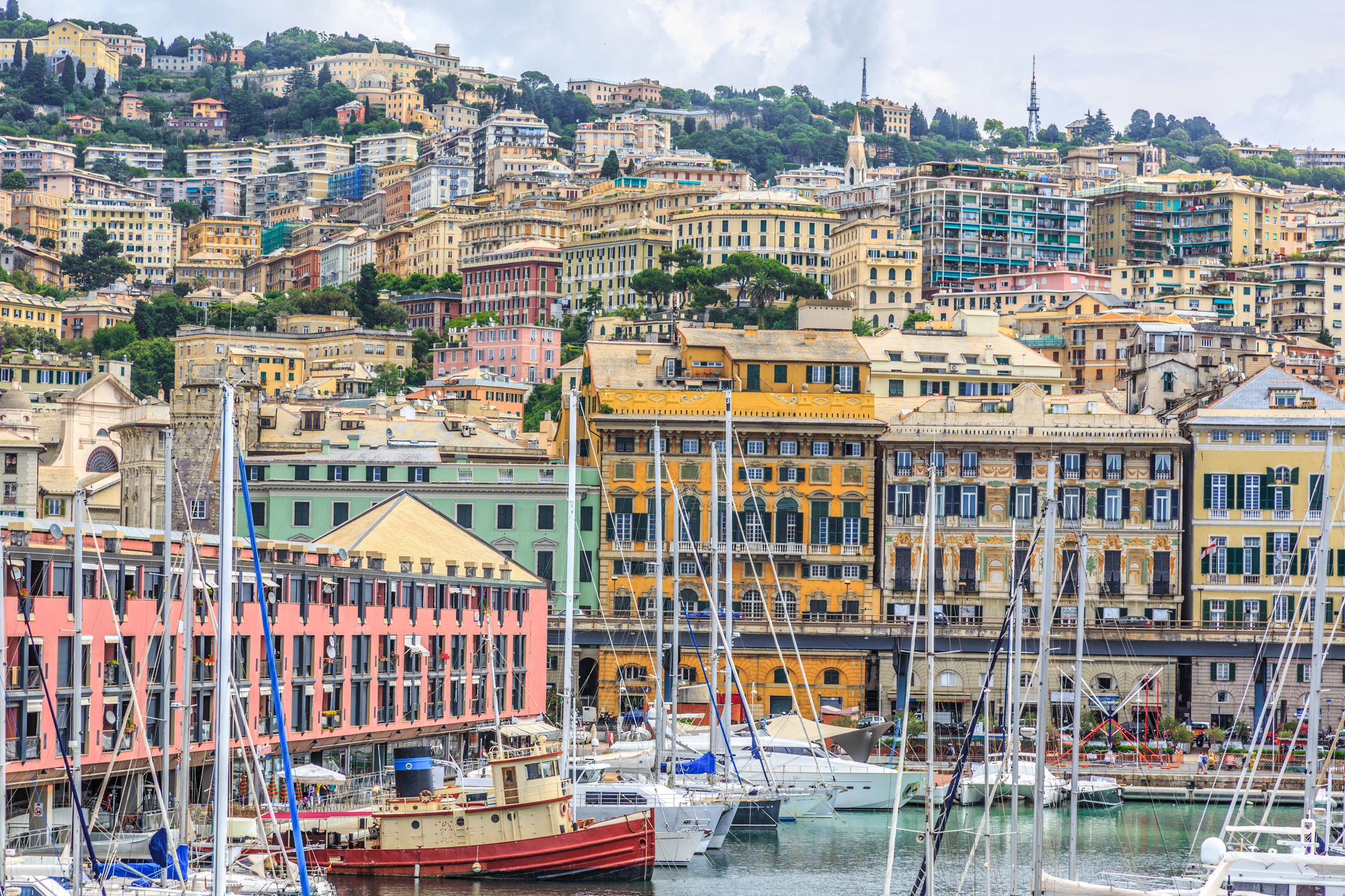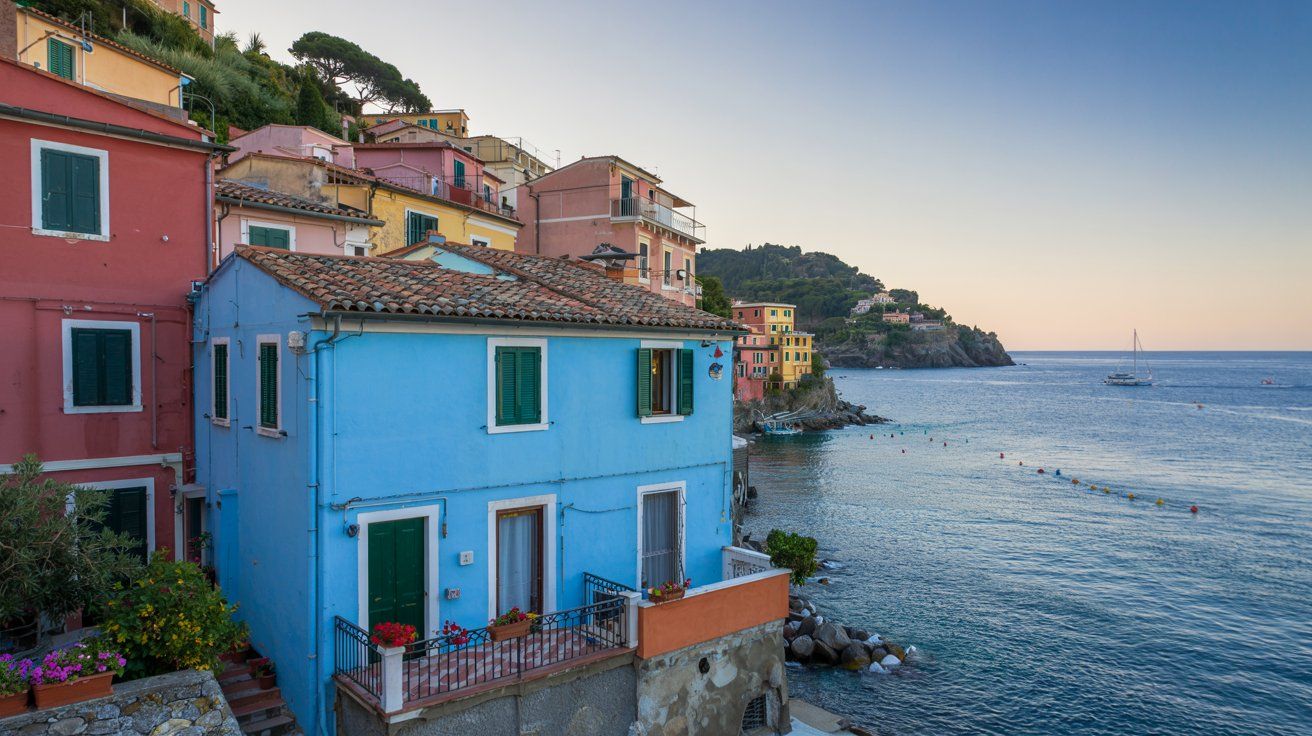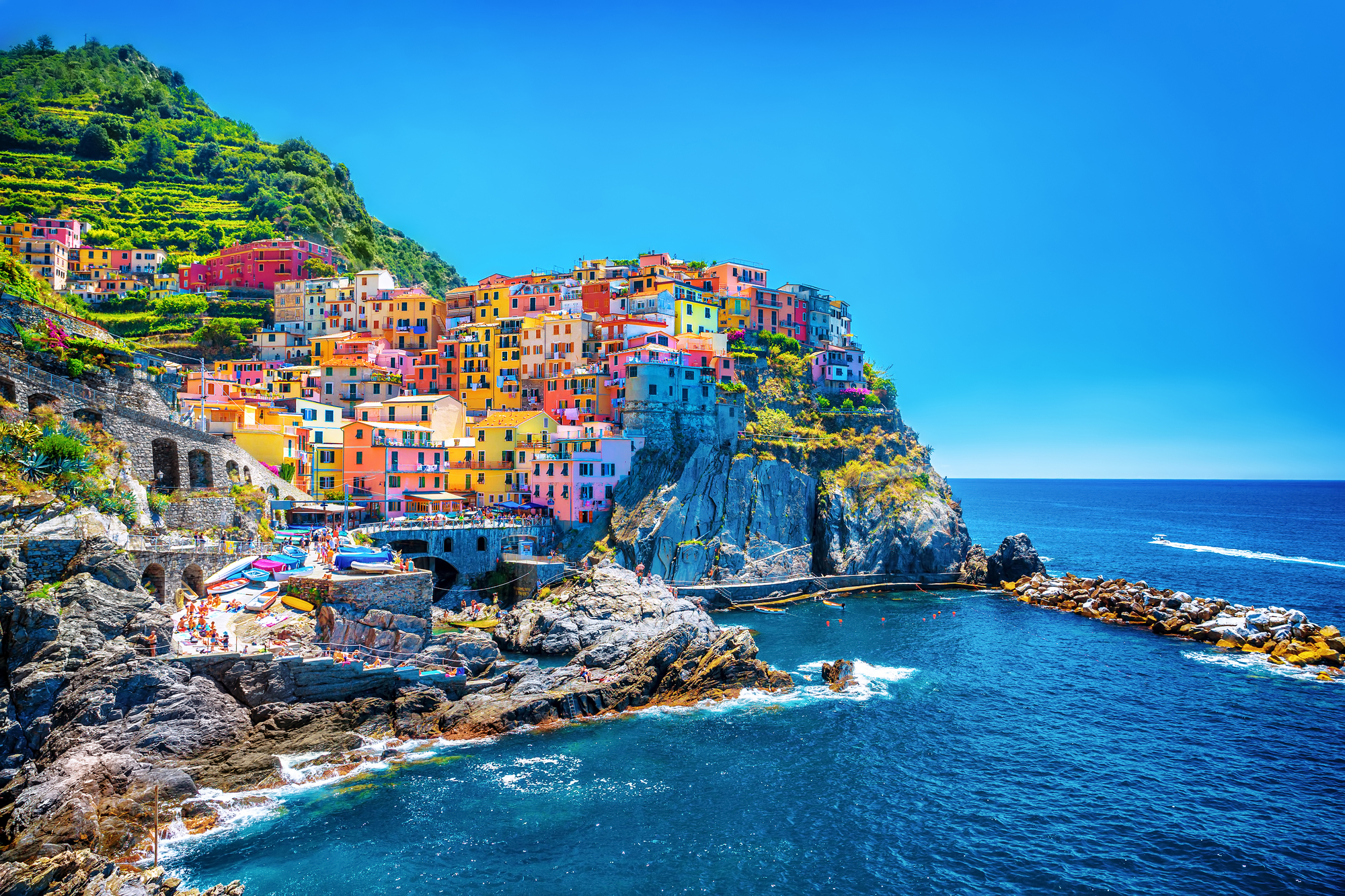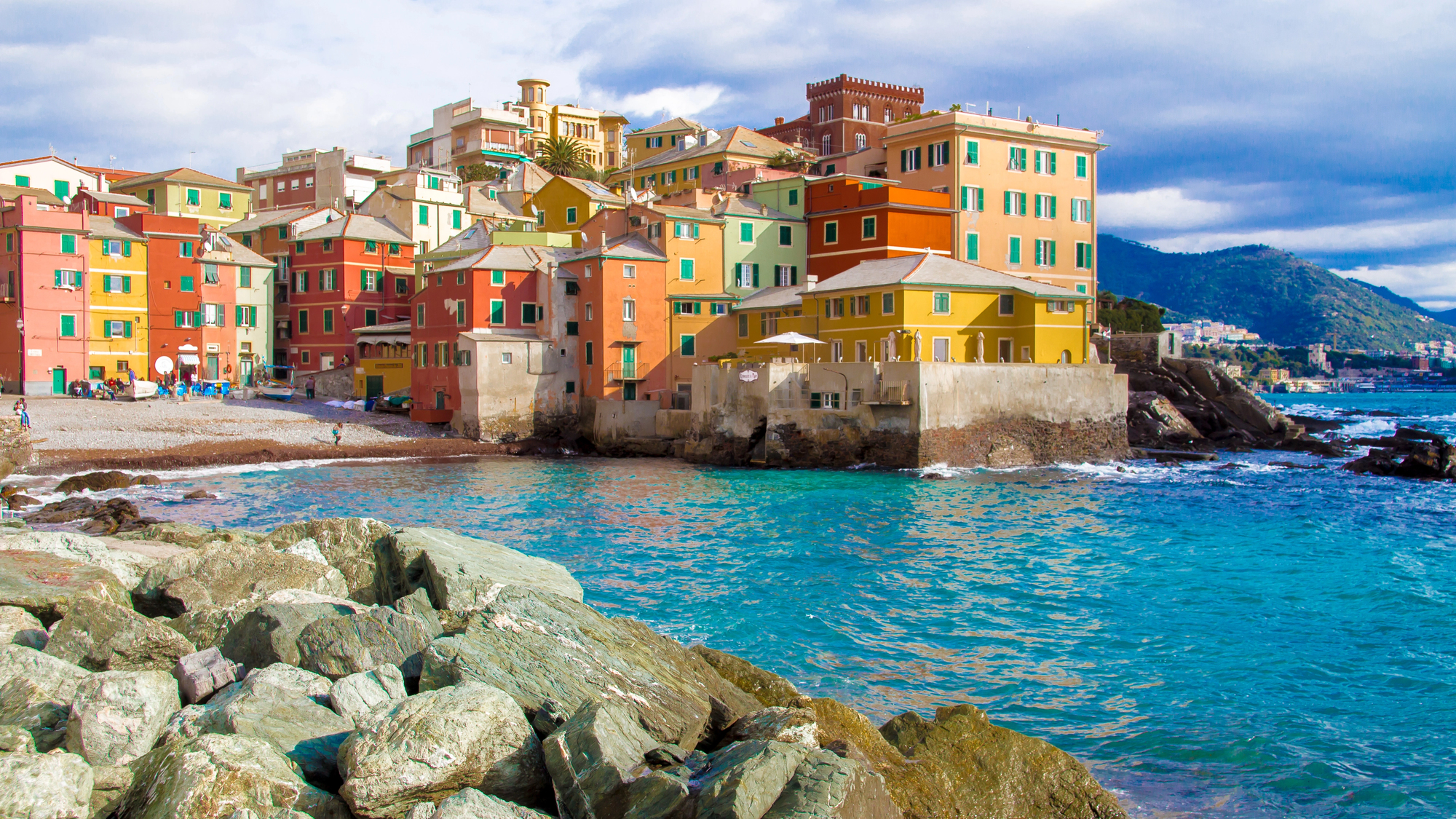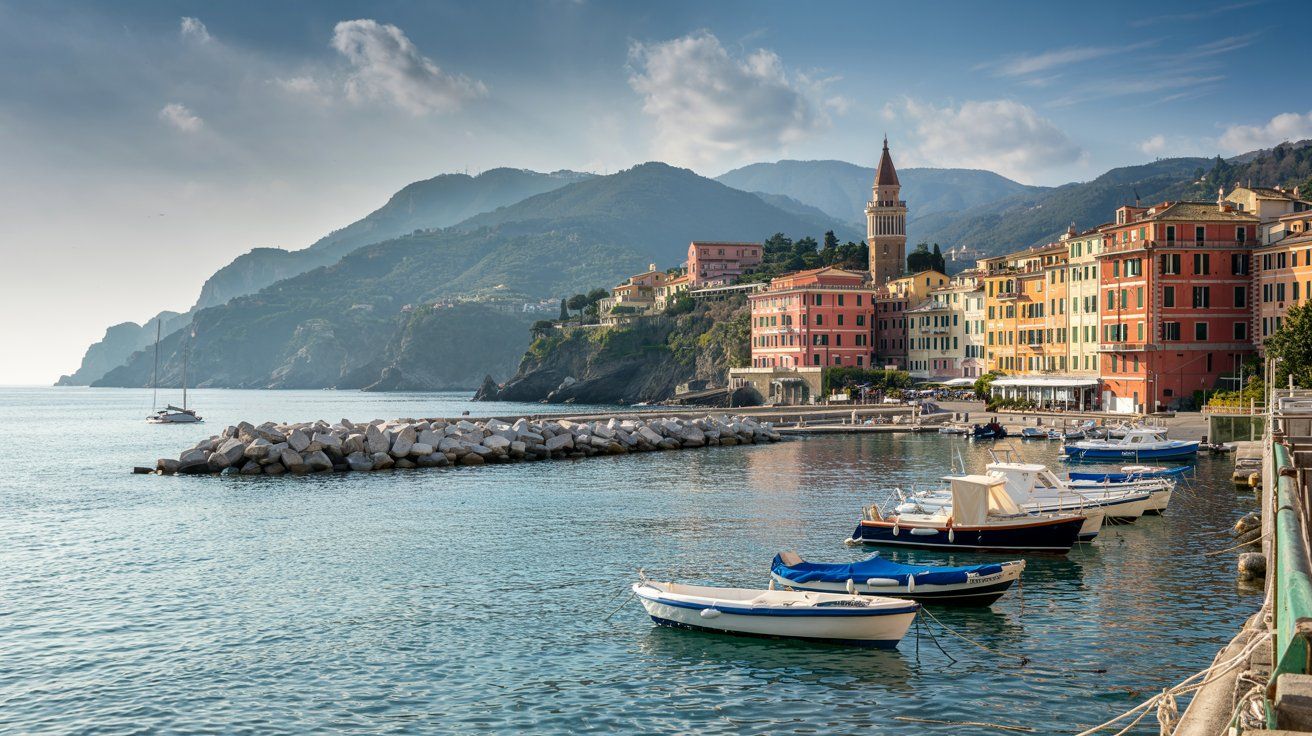The Bisagno River flows through the eastern part of Genoa, Italy, stretching about 25 kilometers (16 miles) through the scenic Ligurian landscape. This unique waterway has shaped the city’s development for centuries, creating a fascinating relationship between urban life and natural forces. The Bisagno is a seasonal stream that remains dry most of the year but can transform dramatically during heavy rainfall, sometimes causing significant flooding that has marked Genoa’s history.
Walking along the Bisagno’s banks gives you a different perspective of Genoa, away from the tourist crowds of the old port. You’ll notice modern flood control measures alongside historic bridges and architecture, telling the story of how Genoese people have learned to live with this unpredictable waterway. Near Genova Brignole railway station, the river cuts through the city with a mix of natural beauty and urban engineering.
Get a discount of 15% to 70% on accommodation in the Italian Riviera! Look for deals here:
Italian Riviera Hotels, Apartments, B&Bs
The Bisagno Valley has experienced three major floods over the last three centuries, making it an important case study in Italian water management. When you visit today, you might see cars and scooters passing over bridges where floodwaters once carried similar vehicles away. This contrast between calm daily life and the river’s powerful potential creates a uniquely thought-provoking element of your Italian adventure.
History of Bisagno River
The Bisagno River has played a crucial role in shaping Genoa’s development throughout history. This seasonal stream begins at Mount Spina and travels approximately 25 kilometers before emptying into the Ligurian Sea.
In ancient times, the river served as a natural boundary for the expanding city. As Genoa grew in importance as a maritime power, communities along the Bisagno’s banks became increasingly integrated with the main city.
A significant turning point came in 1874 when Mayor Andrea Podestà proposed and implemented a territorial expansion plan for Genoa in the lower Val Bisagno area. This annexation marked the beginning of what would later be known as “Great Genoa.”
The relationship between Genoese residents and the Bisagno has been complex – described by locals as a “story of love and hate.” While providing water and defining the city’s eastern section, the river has also brought devastating floods.
One of the most notable flood events occurred on October 9, 2014, when the typically dry riverbed transformed into a raging torrent. This flash flood caused significant damage throughout the city and prompted new flood management strategies.
Today, you can observe the final stretch of the Bisagno’s journey from Genova Brignole railway station to its mouth at the sea. This section has been heavily modified over centuries to accommodate urban growth and prevent flooding.
What to See in Bisagno River
The Bisagno River stretches 25 kilometers through Genoa, offering several interesting sights despite being a seasonal stream that remains dry most of the year.
Near Genova Brignole railway station, you can observe the river’s urban channel as it flows through the eastern part of the city. This area provides a glimpse into how the waterway has shaped Genoa’s development over centuries.
One of the most impressive sights along the Bisagno is Genoa’s historic aqueduct. This remarkable Roman-era structure runs along the valley bed and once supplied the entire city with water. The ancient engineering marvel showcases incredible stonework that has withstood thousands of years.
Wildlife enthusiasts will appreciate the occasional bird sightings near the river mouth, including the Black-winged stilt. Locals call this elegant bird “Cavaliere d’Italia” (Italian Knight), and spotting one offers a delightful contrast to the urban surroundings.
The river valley creates a natural corridor through the city, providing unique perspectives of Genoa’s architecture and Italian Riviera landmarks that you won’t see from typical tourist routes.
For history buffs, the Bisagno River has played a significant role in Genoa’s development, and you can trace its influence on the city’s layout as you follow its course from inland areas toward the Mediterranean Sea.
How to Get to Bisagno River
The Bisagno River runs through the eastern part of Genoa, making it fairly accessible for visitors. This 25-kilometer waterway is an important landmark in the Ligurian capital.
Getting to the Bisagno River is simple using Genoa’s efficient public transportation system. AMT Genova operates bus line 15, which runs along parts of the river. Buses depart every 5 minutes from Brigata Bisagno/Cadorna to Fiume/Thaon Di Revel, with the journey taking just 6 minutes. Tickets cost approximately €5.
If you’re staying in central Genoa, head toward Genova Brignole railway station. The river passes directly by this major transportation hub, making it an excellent starting point for your exploration.
For those who prefer walking, follow signs for Val Bisagno (Bisagno Valley). The historic aqueduct of Genoa also traverses this valley and can serve as a landmark to help you navigate to the river.
Keep in mind that the Bisagno is a seasonal stream that remains dry for much of the year. The best times to see flowing water are during rainy seasons, typically spring and fall.
Transportation options:
- Bus line 15 (€5)
- Walking from Genova Brignole station
- Taxi services from central Genoa
Remember to check local weather conditions before visiting, as the Bisagno has experienced significant flooding events throughout its history.
Bisagno River Visitor Information
The Bisagno River runs for 25 kilometers through the eastern part of Genoa, creating a scenic valley worth exploring. You can easily reach this area by taking public transportation from Genoa’s city center to the Brignole railway station, where the river flows nearby.
The best time to visit is during spring or fall when the weather is pleasant. Summer can be quite hot, while winter might bring occasional flooding as the Bisagno is a seasonal stream that remains dry for much of the year.
While visiting the Bisagno Valley, don’t miss the historic aqueduct of Genoa. This remarkable structure has supplied water to the city and its port for centuries and offers beautiful walking paths alongside it.
Top activities near the Bisagno River:
- Walking along the riverside paths
- Photographing the historic bridges
- Exploring the Val Bisagno neighborhoods
- Visiting the nearby parks
Practical tips:
- Wear comfortable shoes for walking
- Bring a water bottle, especially in summer
- Check local weather forecasts, particularly during rainy seasons
- Consider joining a Genoa City Walking Tour to learn more about the city’s waterways
The area offers several cafes and restaurants where you can enjoy local Ligurian cuisine while overlooking the waterway. For a truly authentic experience, try the local focaccia at one of the bakeries in the valley.
Where to Stay Near Bisagno River
Genoa offers several excellent accommodation options near the Bisagno River, making it convenient to explore this historic Italian city. The Bassa Val Bisagno area features over 3,000 hotels with thousands of positive guest reviews.
For luxury travelers, the Grand Hotel Savoia stands out as a premier choice. This elegant hotel provides upscale amenities while maintaining easy access to the river and Genoa’s main attractions.
Meliá Genova is another excellent option, conveniently located near the Ponte Monumentale, the picturesque bridge spanning the Bisagno River. From here, you can easily walk to Genoa’s historic center and enjoy the charming riverside views.
Budget-conscious travelers might consider Leone X Genova Affittacamere or Garden Suite, both offering comfortable accommodations at more affordable rates while maintaining proximity to the Italian Riviera landmarks.
Sports enthusiasts will appreciate hotels near Luigi Ferraris Stadium in the Bassa Val Bisagno area, combining convenience for match days with beautiful riverside locations.
Prices for accommodations near the Bisagno River start from around $57 per night, though rates vary by season and availability. Booking flexibility is available at many properties, allowing you to adjust your travel plans if needed.
The Centro Commerciale Bisagno area also offers several lodging options, perfect if you want shopping conveniences alongside your riverside stay.
Things to Do Near Bisagno River
The Bisagno River offers visitors a perfect starting point to explore Genoa’s hidden treasures. This seasonal stream, which flows through the eastern part of the city, connects you to numerous attractions worth visiting.
Begin your adventure by exploring Genoa’s historic aqueduct, an impressive Roman-era structure built in the Bisagno valley. This engineering marvel once supplied the entire city with water and makes for a fascinating historical walk.
The Church of San Siro in Struppa is just a short trip from the river. This 12th-century church showcases classic Genoese Romanesque architecture and provides a peaceful retreat from the bustling city.
For marine enthusiasts, the world-famous Aquarium of Genoa is easily accessible from the Bisagno area. As one of Europe’s largest aquariums, it houses thousands of marine species in realistic habitats.
Venture to the charming coastal district of Foce, where the Bisagno meets the Ligurian Sea. This serene neighborhood offers beautiful views and is conveniently located near Genoa’s historic center.
From Foce, you can easily walk to major landmarks including:
- Palazzo Ducale
- The Old Port (Porto Antico)
- The iconic Boccadasse fishing village
Consider joining a walking tour to fully appreciate the area’s rich history and architecture. Many tours include the Bisagno Valley as part of their exploration of Genoa’s less-visited but equally fascinating districts.
Get a discount of 15% to 70% on accommodation in the Italian Riviera! Look for deals here:
Italian Riviera Hotels, Apartments, B&Bs


